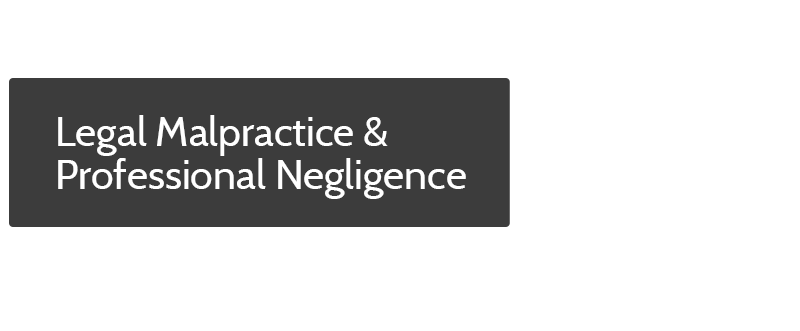Understanding the Statute of Limitations in Legal Malpractice Cases (Part 1)
WHAT IS A STATUTE OF LIMITATIONS?
A statute of limitations is a law (a “statute”) that limits the amount of time a plaintiff has to bring a legal claim against a defendant. In cases involving legal malpractice (professional negligence) the statute of limitations controls how much time the allegedly injured plaintiff has to bring a case against the attorney.
Different statutes of limitations apply to different types of lawsuits. If you believe you have a legal claim against another person (for legal malpractice or otherwise), consult an experienced attorney promptly; if you delay beyond the end of the relevant statute of limitations (and no exception exists to extend that time for you) you may lose your legal rights entirely.
HOW LONG IS THE STATUTE OF LIMITATIONS ON LEGAL MALPRACTICE IN CALIFORNIA?
California’s statute of limitations governing civil actions for legal malpractice claims based on provision of legal services is located in California Code of Civil Procedure Section 340.6.
The statute says that civil actions (lawsuits) against a lawyer for “wrongful acts or omissions, other than for actual fraud” must be commenced within the earlier of:
1. One year after the plaintiff discovers (or reasonably should have discovered) the attorney’s wrongful act or omission; or
2. Four years from the date when the attorney’s wrongful act or omission actually occurred.
The statute also contains some exceptions:
— “In an action based upon an instrument in writing, the effective date of which depends upon some act or event of the future, the period of limitations … [begins] run upon the occurrence of that act or event.” (CCP Section 340.6(b)).
— The mandatory deadline is extended when the statute is tolled due to certain specified circumstances. (We’ll discuss the issue of tolling more in Friday’s post.)
— In criminal cases where the plaintiff must establish his or her factual innocence of the crime (as an element of the malpractice claim), the plaintiff must commence an action against the attorney within two years of the date the plaintiff receives the required exoneration.
Once the statute of limitations runs, the plaintiff may not be able to sue the defendant lawyer for malpractice. After the end of the applicable statutory period, the plaintiff’s claim is barred (and cannot be brought) unless the plaintiff can prove the statute was tolled and did not run for a period long enough to extend the filing date and allow the plaintiff’s claim.
Understanding the applicable statutes of limitations, and how they apply to the facts of a given case, requires experienced legal analysis. If you believe you have a claim against an attorney, contact our offices–or another experienced lawyer–promptly for an evaluation of your legal rights. Whether you speak with us or with someone else, do not delay. Waiting could damage your legal rights and even prevent you from recovering damages altogether.
***
Disclaimer: THIS ARTICLE IS FOR INFORMATIONAL PURPOSES ONLY, AND DOES NOT CONSTITUTE LEGAL ADVICE OR CREATE AN ATTORNEY-CLIENT RELATIONSHIP BETWEEN THE AUTHOR AND ANY PERSON. Your rights and experiences may vary. Never use an online article (including this one) to evaluate your legal claims. Speak with an experienced lawyer promptly to obtain a personalized evaluation of your claims, possible damages, and options. You may lose or compromise your rights if you delay in consulting legal counsel. Legal claims against lawyers or other third parties are a complicated topic. If you believe you have a claim against an attorney who failed to provide you with competent representation, or any other type of legal claim, consult an experienced lawyer immediately for an evaluation of your possible rights and claims.














